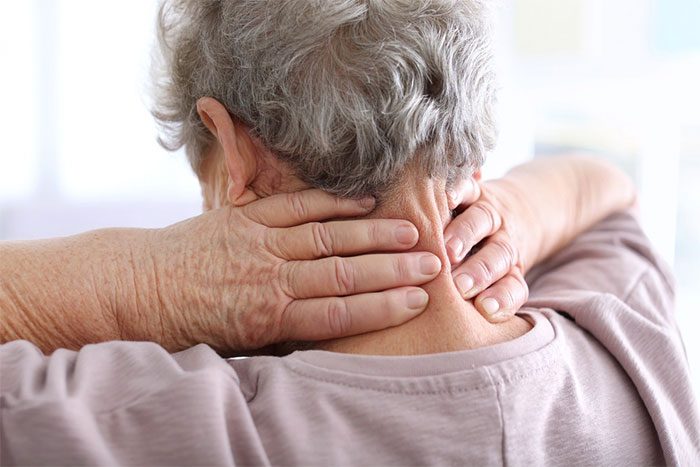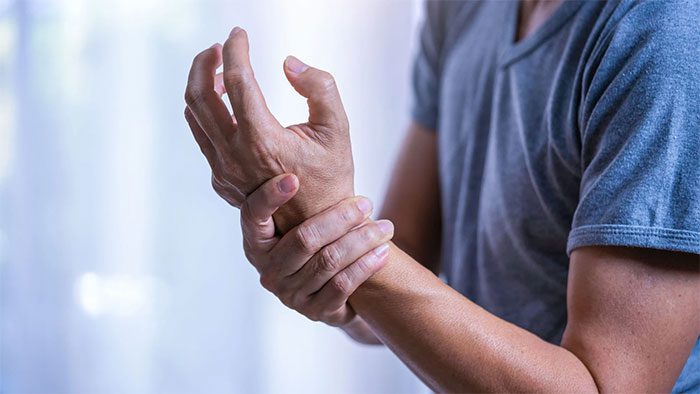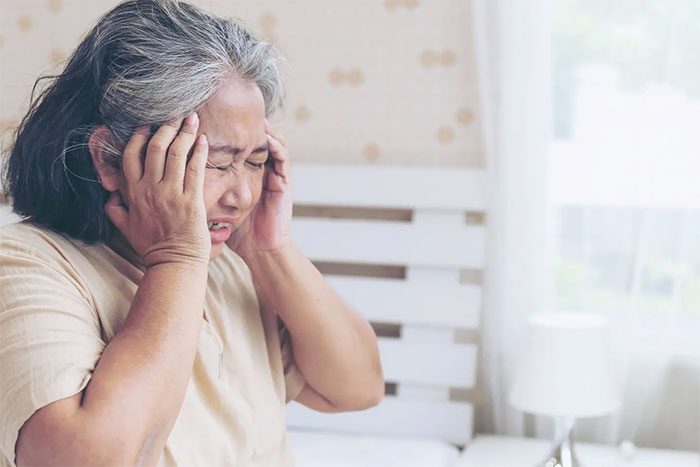Most people occasionally experience some aches and pains. In fact, sudden pain is an important response from the nervous system that alerts you to the possibility of injury. However, chronic pain—pain that lasts for at least 12 weeks—can gradually limit your mobility over time and decrease your endurance.
What Does Chronic Pain Warn You About?
Chronic pain can be relatively clear, with the sensation described as sharp, aching, burning, or throbbing in the affected areas. The frequency of pain can be intermittent or constant, coming and going without clear reason. Chronic pain can occur in any part of the body, with different sensations of pain.
The most common types of chronic pain include: headaches, post-surgical pain, pain after injury, lower back pain, cancer-related pain, arthritis pain, neuropathic pain (nerve damage pain), and pain from psychological trauma.
1. Causes of Chronic Pain
Chronic pain can be caused by various factors. Typically, conditions associated with the normal aging process can affect bones and joints in ways that cause chronic pain. Other common causes include nerve damage and unhealed injuries.

There are many causes of chronic pain. (Image: Internet).
The exact cause of chronic pain not related to injury is still not fully understood, and it relies on the frequency of pain, the area where pain occurs, and the intensity of pain for identification. Below are some common causes of chronic pain that you should be aware of:
1.1. Underlying Health Conditions
According to Healthline, many believe that chronic pain often develops after nerve damage, such as a sprain or strain. Nerve damage can make pain more severe and prolonged. In such cases, treating the initial injury may not fully resolve the pain.
However, in some cases, chronic pain occurs without any prior injury; it may stem from underlying health conditions such as:
– Chronic Fatigue Syndrome: characterized by extreme, persistent fatigue often accompanied by muscle aches and joint pain without swelling, headaches, or sore throats.
– Endometriosis: a condition where tissues similar to the lining of the uterus grow outside of the uterus or within it, often on other organs in the pelvic or abdominal cavity.
Endometriosis causes chronic pain as the endometrial tissue responds cyclically to menstrual cycles, swelling, breaking down, and causing inflammation where it develops. This leads to irritation and scarring, forming adhesions between organs, resulting in pain, swelling, and potential reproductive issues. Pain often intensifies during menstrual cycles and can affect a woman’s quality of daily life.
– Fibromyalgia: a syndrome that affects the processing of pain signals and their transmission to the muscles from the brain. Fibromyalgia is characterized by widespread musculoskeletal pain, and the condition often progresses silently, significantly impacting health, mobility, and daily life.
– Inflammatory Bowel Disease: a recurrent and remitting condition characterized by chronic inflammation at various locations in the digestive tract, leading to diarrhea and abdominal pain.

Different areas of pain can cause different sensations. (Image: Internet).
– Inflammatory conditions such as arthritis: cause chronic pain through inflammation and gradual destruction of joints. When joints become inflamed, the cartilage protecting the ends of the bones in the joint may wear away, causing friction and pain when bone rubs against bone. Inflammation can also damage surrounding tissues, including ligaments and muscles, increasing pain and limiting movement. Products of the inflammatory process can further stimulate pain and cause swelling, redness, and a sense of warmth in the affected area.
– Interstitial Cystitis: is a non-infectious inflammation of the bladder that causes pain (in the suprapubic area, pelvic region, abdomen), frequent urination, urgency, and incontinence.
– Temporomandibular Joint Disorders: involve abnormal function of the chewing muscles and the temporomandibular joints. However, the symptoms of this condition are often unclear, transient, and can sometimes resolve spontaneously, which is why most people do not pay much attention to it.
Individuals with this disorder may experience painful sensations when chewing, talking, yawning, or even at rest. Pain often radiates from the joint to nearby areas such as the ears, face, neck, and shoulders. Stress or clenching the jaw can exacerbate symptoms, and in some cases, may lead to unusual sounds when opening the mouth, a feeling of the joint being stuck, or difficulty opening the mouth wider.
– Cancer: the development of tumors can place pressure on muscles, bones, nerves, or other organs. Pain can also arise from inflammatory reactions around the tumor or from the side effects of treatments like chemotherapy and radiation, which may damage healthy cells and tissues.
Besides the aforementioned conditions, persistent pain can also be a symptom of stomach ulcers, AIDS, gallbladder disease, and more.
Thus, chronic pain can be categorized into three main groups of causes:
- Non-inflammatory pain: headache, back pain, neck pain due to muscle spasms.
- Inflammatory pain: post-surgical pain, pain from injuries, degenerative pain, pain in cancer patients, arthritis pain, gout pain, etc.
- Neuropathic pain: post-herpetic pain, sciatica, intercostal neuralgia, trigeminal neuralgia, pain from diabetic neuropathy complications, etc.
1.2. Poor Diet and Nutritional Deficiencies
We all know that a balanced diet provides the necessary vitamins, minerals, and macronutrients for the body’s daily activities. Your diet can also affect your energy levels, mood, and immune system.

A poor diet can lead to chronic pain. (Image: Internet).
Thus, it can be seen that a poor diet can lead to chronic pain by providing insufficient essential nutrients for the body or by causing inflammation and oxidative stress. When the body does not receive enough vitamins, minerals, and other nutrients, bodily functions may decline, leading to a weakened immune system and poor recovery ability.
A diet high in sugar, saturated fats, and trans fats can contribute to the development of inflammation and chronic pain. Excessive consumption of processed foods and a lack of fiber can also hinder digestion, leading to health problems such as chronic inflammatory bowel disease.
Therefore, maintaining a balanced, nutrient-rich diet is essential to support overall health and reduce the risk of chronic pain conditions.
Who is at Risk for Chronic Pain?
Chronic pain can affect individuals of all ages but is most commonly found in older adults due to age-related factors (aging). In addition to age, other factors that may increase the risk of chronic pain include:
- Injury
- Surgery
- Female gender
- Overweight or obesity.
2. How is Chronic Pain Treated?
The primary goal of treating chronic pain is to reduce pain and enhance functional mobility. This helps you return to daily activities without discomfort. The severity and frequency of chronic pain vary from person to person; therefore, treatment plans, management, and control of chronic pain will also differ accordingly.
Medical treatments, lifestyle changes, or both approaches may be applied to manage chronic pain. Specifically:
Pain Relief Medication
Some pain relief medications can be effective in alleviating discomfort caused by chronic pain. Patients should avoid misuse of pain relief medications and should use them according to a doctor’s guidance and the instructions on the medication label.

Use pain relievers as prescribed by your doctor, do not misuse medication. (Image: Internet).
+ Over-the-counter pain relievers: including acetaminophen, non-steroidal anti-inflammatory drugs (NSAIDs) such as aspirin or ibuprofen
+ Opioid pain relievers include morphine, codeine, and hydrocodone
+ Other supportive pain relievers such as antidepressants, anticonvulsants, etc.
Medical Procedures
Some medical procedures may be prescribed to alleviate chronic pain, including: functional electrical stimulation techniques, local anesthesia (blocks), acupuncture, surgery, etc.
Lifestyle Changes
Several lifestyle changes can help support the reduction of chronic pain, which may include: physical therapy, yoga, massage, meditation, etc.
Overall, there are many ways to manage and alleviate chronic pain. Accurately identifying the cause of pain will help doctors implement appropriate treatment measures for each condition. It is essential to adhere to the pain management plan when symptoms arise. Don’t forget to maintain a balanced diet, get adequate sleep, and exercise regularly to keep your body healthy and reduce feelings of stress.


















































